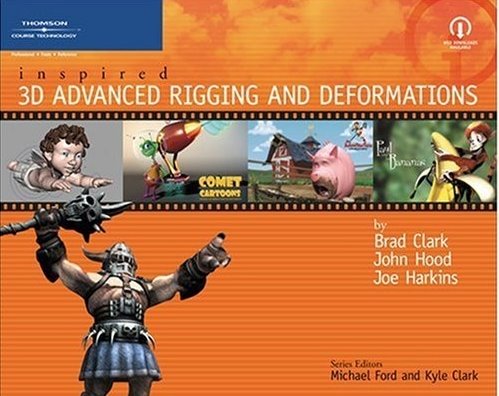Here is the excerpt from the book:
So far we have been talking about finding references for organic or living characters and the need for proper joint placement for deformations. We have
not discussed the topic of mechanical rigging and the slight differences that you might deal with when mapping out a robotic or mechanical character.
The same ideas about finding real references for the kind of mechanical joints you will be setting up apply as they do for organic characters. However,
mechanical objects have engineered systems that need to work together and feel like they have a reason to exist. The gears, pistons, or cables need to feel
like they work, are controlling the object, and have a purpose for being where they are on a robot or vehicle. It is up to the Character TD to work out
mechanical systems that animate well, but at the same time keep the animators from having to rotate and hand keyframe all the mechanical bits in the asset.
Take, for example, a robotic suit used to move heavy objects found in so many science fiction movies. If you have to rig up this kind of heavy equipment,
then real construction equipment provides a great reference for how your model parts rotate and pivot, as well as how tightly they are attached or how they
interact as part of the whole. And construction equipment should be easy enough to find. In a big city, you might look at cranes or fork lifts. Even in the
country, a tractor would server as a good reference. Any equipment that is large enough to demonstrate the working relationship between heavy moving
parts should suffice.
The reason I am posting this is because I was reading an article at VFXWorld on the golden army characters in the Hellboy II and found a quote that fight right in with the paragraph above.
"The rig that we animated with was pretty complex; not like a human rig. There were a lot of specific, machine-like movements required to get it to look robotic and able to move well enough to get the performance that Guillermo wanted." Fortunately, Davis was able to find some inspiration on his morning journey to work at Double Negative's studios in the Soho section of London. "It's across from Chinatown, and luckily they were tearing the roads up there, so on the way to work I could watch the big machines. They had a lot of high-tension, stiff joints. When they made a sudden stop, I could see how the force resolved itself within the machine."It was a very small part of the book but I did not want the information to be overlooked.
The DNeg animators also looked at references on robotic arms, noticing how when they stop after completing a movement, there's a bit of oscillation as it comes to a stop. "We animated a lot with FK -- forward kinematics -- and not inverse kinematics," explains Davis. "IK would tend to give a lot of movement in the elbow, like a puppet, which makes the arm look a little weaker."
© 1996 - 2008 AWN, Inc. All rights reserved.
Added bonus:
The Crazy Elevator rig is a complicated expression to create an automated elevator for The Red Star game environment. Tre Z did the model and I, with some math help, got it working 99% automatically, with an extra layer for keying the start and end. The artist could just move the elevator shaft and it moved the pulleys, rotated gears and was a quick way to add some life to the environment. Teaching some basic rigging and tech work to game environment modelers can take the workload off of animatoin and rigging and at the same time create a much more interactive world.
Watch: Crazy Elevator rig movie


No comments:
Post a Comment